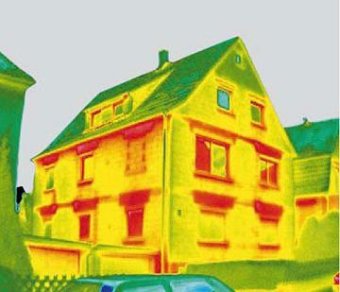Sufficient insulation is achieved through the use of technologies such as:
- using layered glued wood
- properly designed seals
- proper installation
Insulation of windows, U-factor
What exactly is this U factor?
It is a heat transfer coefficient for a structural element (e.g. wall, window, etc.) It shows the amount of heat loss (1W) from the interior to the exterior over a surface of 1m², with a difference in temperature of 1°C (1 K).
Conductive materials, such as metals, have a less favourable value of this coefficient in comparison to insulating materials, such as polystyrene, mineral wool or insulated glass, which have a lower U value and therefore insulate better. Heat losses in such rooms are in effect smaller.
The unit used to describe the heat-transfer coefficient U is W/(m²K).
The heat transfer coefficient is a very important parameter for structural partitions – heat losses can be determined for a given partition on its basis. The coefficient value depends on the type and thickness of the material from which walls, windows are made, but also on the nature of the partition.
The heat transfer coefficient for the partition is calculated based on the heat resistance coefficient of the thermal resistance of the partition and an allowance for insulation leaks and thermal bridges.

What a buyer should look for when comparing U coefficients for windows?
- Each window has, depending on its size and quality, its own heat transfer coefficient (coefficient Uw.) 10 windows = 10 different heat transfer factor values. This is also possible.
- The bigger the window, the better its Uw factor and vice versa. This stems from the fact that the glass and frame have different heat-transfer U-factors. In other words, more glass panes = warmer window, but not vice versa. The conclusion from this is that the right choice of window panes is very important.
- According to the standard, the maximum U-factor for windows in a façade is 1.8 W/(m²·K) – for the I, II and III climate zones and 1.7 W/(m²·K) – for zones IV and V. Modern windows are, however, warmer and have a much lower, that means better, U-factor value. Windows installed in energy efficient homes should have a U factor no greater than 1.3 W/(m²·K), but nothing stands in the way of them being even warmer. Passive windows are characterised by a U-factor no greater than 0.8 W/(m²·K).
- In the case of newly constructed buildings, the designer or architect is obliged to present the company offering windows a Uw-factor value for each ordered window. That is because only it calculates the total energy consumption of the constructed building and determines the building materials and work method, through which the building is to have the energy intensity class and energy class of building or apartment as per the design. This is something you should demand from developers, designers.
- Companies selling windows have an obligation to mark windows with an indication of the heat-transfer factor for each ordered window.
- Warm installation as per the requirements of the standard is very important, if 100% of the thermal insulation capacity of modern windows is to be used.



